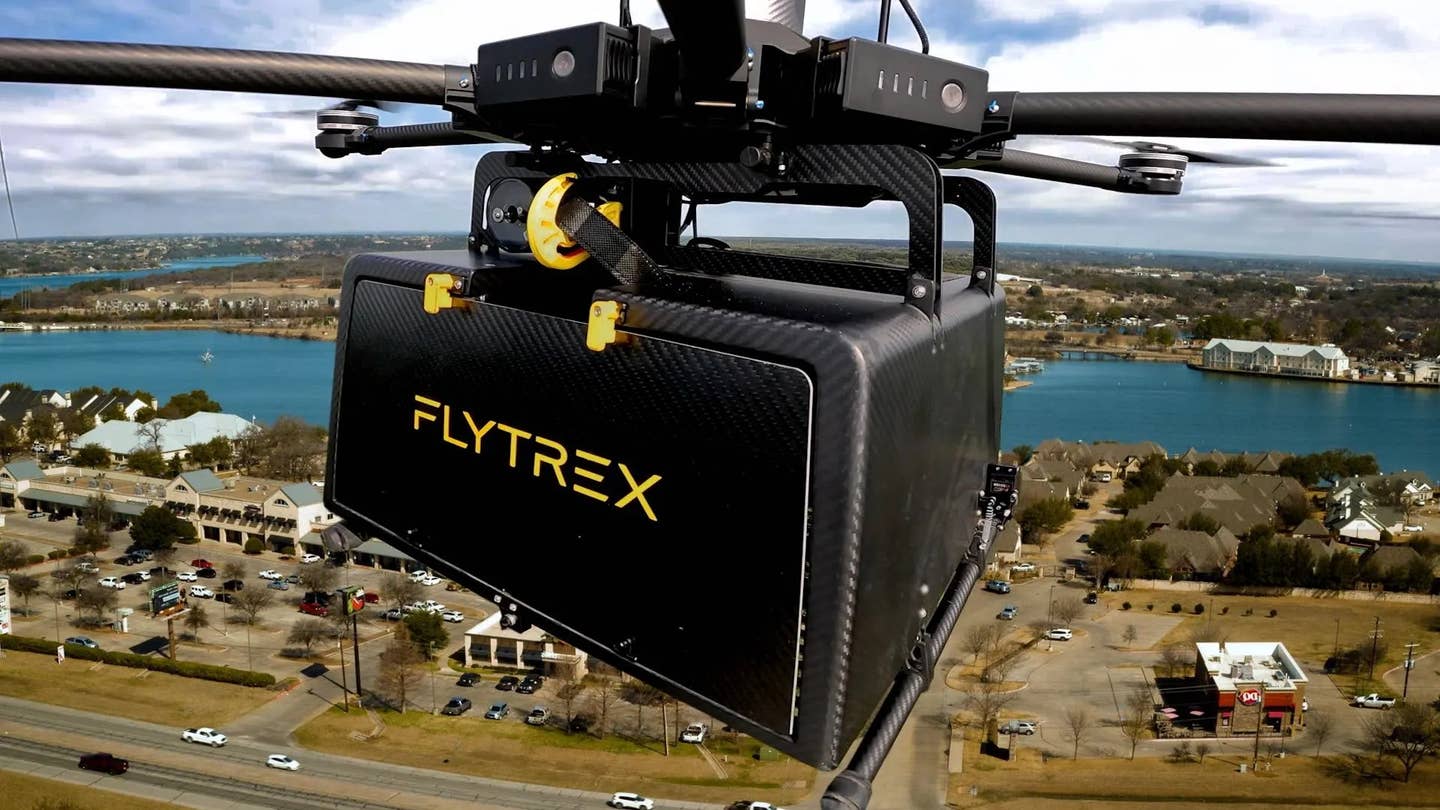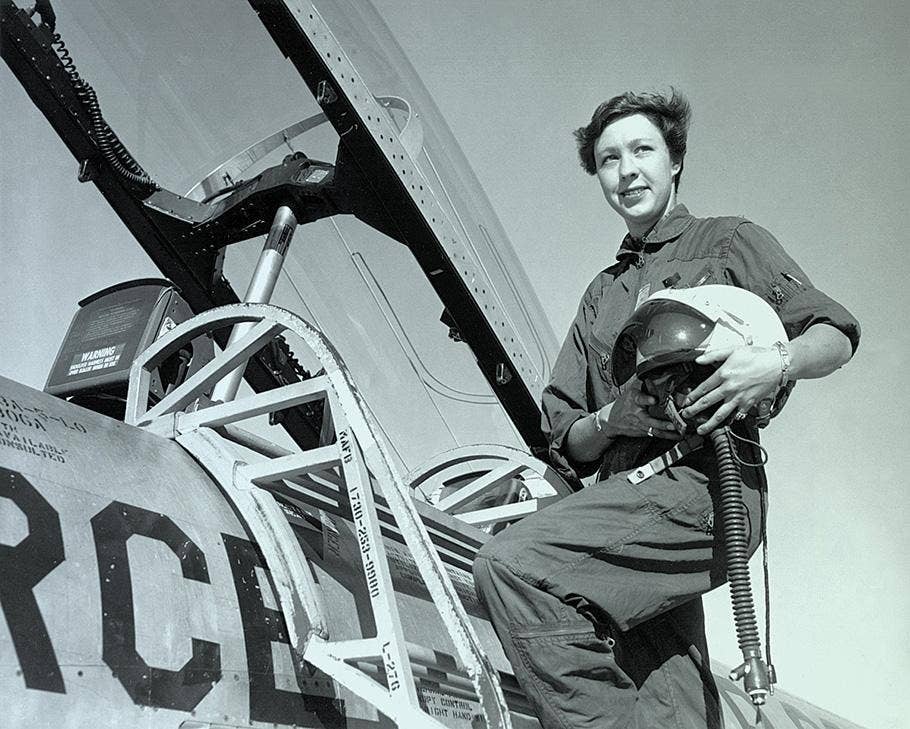5 Trends Impacting Future Drone Pilot Employment in 2024
Through a combination of obtaining your Part 107 license and understanding industry trends, you can take your share of the commercial drone pilot jobs available in this rapidly growing field.

The global commercial drone market is expected to balloon to $1.2 trillion by 2030. [Photo credit: DroneUp]
The morning news is often full of bleak projections for the economy. Massive layoffs, dropping stock prices, and pessimistic industry growth projections are all too common.
Thankfully, there is resilience within the global economy that keeps everything moving along a positive trajectory in the long run. When considering an industry for work, it's important to select one that’s progressing forward with lots of growth potential. The commercial drone industry has both of these traits and more.
In 2021 the global commercial drone market was valued at $20.8 billion. By 2030 it’s expected to balloon to $1.2 trillion. That's a compound annual growth rate of 57 percent. If you’re already in the drone industry, stay there. If you’re a hobbyist or someone looking to become an unmanned aerial vehicle (UAV) operator, now is the perfect time to join an industry that’s starting to take off.
Through a combination of obtaining your Part 107 license and understanding industry trends, you can take your share of the commercial drone pilot jobs available in this rapidly growing field.
Part 107: Your Ticket to Admission
Before you can earn a living as a commercial drone pilot in the U.S., you are legally required to earn a remote pilot certification from the FAA. The exam is commonly called the Part 107. Other countries and regions have similar requirements.
There are many FAA drone regulations, and although the government provides an FAA part 107 study guide, many people find it isn't enough. The majority learn the material for the exam through online courses such as those provided by Altitude University, ASA, and the Pilot Institute. In these courses you'll find industry-leading instruction, quizzes, flashcards, and FAA Part 107 practice tests. It is the best option for most people looking to join the industry.
5 Biggest Drone Pilot Employment Trends in 2024
There are many different types of drones and drone jobs. Each drone use case has its own specific needs with regard to pilot skills and drone capabilities. The common denominator for all combinations and applications is the need to keep an eye on future drone pilot employment trends. In 2024 the top five trends to watch include:
- Increasing commercial adoption
- Regulatory changes and standardization
- Drone innovation
- Rise of urban air mobility
- Integration with emerging technologies
Trend 1: Increasing Commercial Adoption
Just a decade ago, it seemed like the drones on the market (outside of the military) had more applications as toys than as useful tools of industry. In just the last few years, drones have become indispensable across the board. From precision agriculture to construction and infrastructure inspections, the use-case scenarios for UAVs continues to grow.
Offering the right mix of technology and affordability, drones appeal to a certain pioneering spirit of innovation. They’ve discovered lost cities, studied whale health, mapped unreachable terrain, identified crop diseases, and provided industries with game-changing capabilities that a decade ago would have only been a dream. The demand for drones is thanks largely to the unparalleled efficiency, cost-effectiveness, and data accuracy they’ve made possible.
Pilots looking to benefit from this trend should:
- Become an expert in at least one silo (construction, agriculture, mapping, inspections, etc.).
- Stay informed of new equipment coming out by subscribing to manufacturers’ newsletters and attending industry events.
- Look for additional services to offer clients, so you can expand adoption and increase revenue streams.
Trend 2: Regulatory Changes and Standardization
Drone technology is way ahead of the regulators. Innovations like beyond visual line of sight (BVLOS) allow drones to safely operate well beyond FAA limits, for example. To their credit, regulatory bodies such as the FAA and Federal Communications Commission are working hard to establish clear regulations and standards to keep the skies safe and moving efficiently.
As new technology emerges, the FAA has continued to define guidelines for drone pilots and manufacturers. While these have not always been well liked by existing pilots, the agency will continue to update, change, and introduce new standards and regulations surrounding flight restrictions, pilot licensing, operational limitations, and data privacy protocols. For these reasons, pilots must keep informed of the trend toward greater regulation.
The best methods for remaining informed include participating in:
- FAA website and email updates: The FAA's official website is a valuable resource for drone pilots.
- FAASTeam seminars and webinars: These events cover a wide range of topics, including regulatory updates, airspace awareness, risk management, and best practices for drone pilots.
- Drone industry associations and organizations: Joining reputable drone industry associations and organizations can also help pilots stay informed about FAA regulations.
Trend 3: Advancements in Drone Technology
The innovative spirit of the drone industry is rapidly increasing drone capabilities and efficiencies. Flying the first drone I bought over a decade ago was more art than science. Drones in those days lacked stability, and payloads were good for the time but laughable by current standards.
Newer drones come with advanced features, such as obstacle avoidance, real-time data processing, and autonomous flight modes, making it easy for all pilots to look like they are seasoned UAV operators.
The trend toward more autonomous systems, which practically fly themselves, allows pilots to focus more on data collection instead of keeping their drone level. There will always be a need for the pilot, but as drones continue to evolve, the role of the pilot is likely to change. Operators will need to become more specialized in data collection and interpretation. Additionally, pilots will also need to learn to fly more advanced systems.
Pilots looking to remain relevant as technology advances should:
- Explore advanced drone models.
- Never stop learning and seek new training opportunities as advanced technology comes to market.
Trend 4: Rise of Urban Air Mobility
If you are unfamiliar with urban air mobility (UAM), you're not alone. This relatively new concept has only started to gain traction in the last few years. UAM is a revolutionary transport system using small, electric aircraft for vertical takeoff and landing (VTOL) in urban areas. Imagine a sky where pilotless air taxis bring people to where they need to go and drones fly around delivering our goods and providing services without much effort on our part. That is the promise of UAM.
As UAM adoption increases, there are many exciting opportunities for drone pilots. Even as aircraft gain greater autonomy, the demand for skilled pilots will be needed for many years or decades before full autonomy can be achieved. Skilled pilots capable of navigating urban airspace, embracing safety standards, and adhering to regulations will find gainful employment in this sector.
Keys to finding employment within UAM.
- Get and maintain any relevant certifications.
- Acquire specialized training, such as flying in confined spaces.
- Stay informed on any changes related to UAM.
Trend 5: Integration with Emerging Technologies
Our final trend is the growing shift toward integrating other cutting-edge technologies with drones. Emerging technologies like artificial intelligence (AI), machine learning (ML), and 5G networks are starting to greatly improve drones' capabilities. Advances such as these, when applied to drones, are enabling UAVs to analyze data in real time, identify objects, and make autonomous decisions, enhancing their efficiency and accuracy.
Pilots looking to get the most out of these emerging technologies need to cultivate an understanding of them. While you may not need to know how to write the code for AI algorithms or be able to build 5G networks, you must understand enough to apply the technology to your specific drone application.
Pilots should:
- Explore drones equipped with AI capabilities.
- Participate in courses focusing on AI integration.
- Stay updated on advancements in AI, ML, and 5G technologies.
Take Advantage of New Drone Pilot Employment Opportunities
As the commercial drone market continues to rapidly grow, current and aspiring pilots must take note of trends affecting the industry. Start your journey by getting your Part 107 with the help of online courses and never stop learning.
If you continue to learn new technology as it comes to market, stay informed of regulatory changes, and look for opportunities to integrate technologies such as AI and ML, you’ll remain competitive in the drone industry for the foreseeable future.
FAQ
How do I start a career as a drone pilot?
Your career as a drone pilot begins with training. You must pass the Part 107 exam in order to become a commercial drone pilot in the United States. Learn the material and pass the exam to begin your career.
Is there a job market for drone pilots?
Yes. The drone industry is growing rapidly, and there is a huge need for UAV operators.
How much do drone pilots get?
Like most careers, it depends on many factors. Salary.com estimates the average annual salary for a Drone Pilot career to be $48,649. It is not uncommon for some pilots to earn over $100,000 per year.

Subscribe to Our Newsletter
Get the latest FLYING stories delivered directly to your inbox






